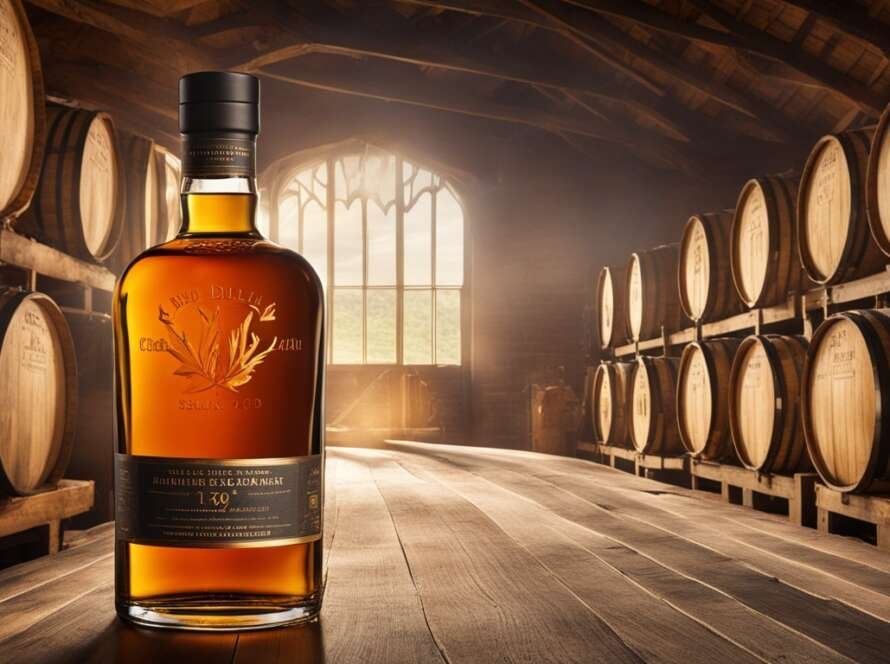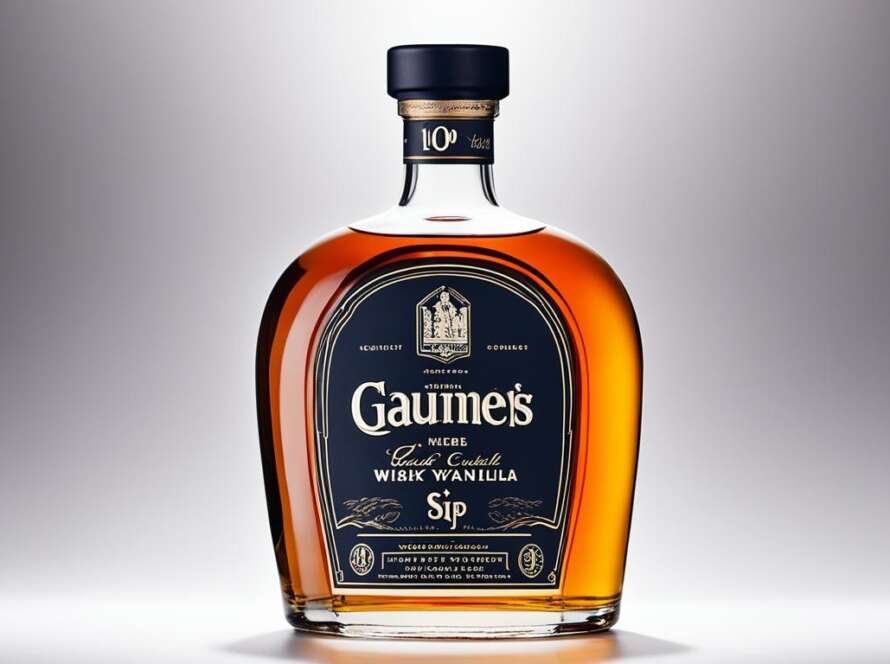Exploring single malt Scotch whisky brings me joy. I love uncovering this drink’s secrets. It’s a drink full of history that delights the senses with its many flavors.
This drink takes a lot to make. It’s 100% malted barley and comes from one Scottish distillery. Then, it ages in oak casks for at least three years.
Scotland’s different areas make whisky taste unique. They add flavors from the land and weather. You can taste the peaty Islay whiskies to the fruity Speyside ones.
Drinking Scotch is an adventure. Fine details like age statements tell a story. They show how long the whisky matured, making its flavors deep.
Key Takeaways
- Single malt Scotch whisky is a revered spirit known for its complexity and rich flavors.
- It is made from 100% malted barley and distilled at a single distillery in Scotland.
- The whisky is aged in oak casks for a minimum of three years, allowing it to develop its distinctive character.
- Scotland’s diverse whisky-producing regions, like the Highlands and Islay, impart unique flavors influenced by geography and climate.
- Connoisseurs appreciate the nuances of each dram, decoding tasting notes and understanding age statements.
The Allure of Single Malt Scotch Whisky
Single malt scotch whisky is loved for its rich flavors. It’s made with care in Scotland, known for its diverse whisky styles. With every taste, you experience a blend of scents and flavors. This is the result of expert distillation and the influence of oak casks.
Production Process
The process starts with malted barley. It’s mashed, fermented, and then distilled in pot stills. Finally, it ages in oak casks for at least three years. This time builds its unique taste and depth.
Regional Differences
Scotland’s regions offer different whisky flavors because of their climates and water. Islay is famous for its smoky whiskies, while Speyside excels in fruity and floral notes. The Highlands bring spicy and nutty whiskies, and the Lowlands are known for their light, grassy flavors. Campbeltown and the Islands add even more variety to this range.
Flavor Profiles
The variety of single malt scotch whisky extends to its many flavors. Lagavulin and Laphroaig are known for their bold, smoky tastes. On the other hand, Glenlivet and Glenfiddich offer smooth, fruity tastes. Each whisky tells a different story through its flavor. The age on the bottle shows how many years it has matured in casks. This aging process adds more complexity and depth to the whisky.
single malt and scotch whisky: A Journey of Taste
Enjoying the deep flavors of single malt and scotch whisky is thrilling. It’s an adventure for the senses. Every sip shows a mix of scents and tastes created by masters.
The Art of Nose-ing
Start by learning how to smell whisky properly. Swirl your glass to catch the lovely smells. Take a deep breath. You’ll smell different things like fruit and peat that tell the whisky’s story.
Sipping Like a Pro
Now, let the whisky touch your tongue. Go slowly and taste each layer. You’ll get hints of where it’s from and the skills of the distiller. Enjoy how sweet, smoky, or spicy it is, showing the whisky’s complexity.
Decoding Whiskey Labels
Finding out what words on the labels mean is key. “Single malt” is from one distillery, and “blended” is a mix of different whiskies. “Cask strength” means it’s not watered down, and the age shows how long it’s been aged.
| Label Term | Definition | Significance |
|---|---|---|
| Single Malt | Whisky from a single distillery | Reflects the unique character of the distillery |
| Blended | A blend of different whiskies | Combines flavors for a harmonious taste |
| Cask Strength | Undiluted whisky straight from the cask | Offers a robust and intense flavor experience |
| Age Statement | Years the whisky has been aged | Contributes depth, complexity, and maturity |
Learning about whisky is a great journey. It needs time, interest, and a love of learning. With each drink, you explore the world of whisky, enjoying its culture and tradition.
Exploring the Whiskey Flavor Spectrum
As a whiskey connoisseur, I’m often amazed by the whiskey flavor spectrum. It’s filled with diverse tastes like sweet vanilla and caramel, and smoky peat. Each sip reveals unique flavors, making the drinking experience truly captivating.
Sweet Surprises
The whiskey flavor spectrum is known for its sweet flavors from oak barrels. With notes of vanilla, caramel, and butterscotch, it’s a delightful mix. Together with honey, they create a beautiful flavor that you can almost taste.
Smoky Sensations
Some whiskies stand out with smoky flavors that are truly memorable. Brands like Laphroaig and Ardbeg are famous for their peaty scents. They remind you of campfires and sea air. This style is unique to Scotland’s Islay region.
Spicy Adventures
If you’re after excitement, try rye whiskey for its spicy flavors. It has bold peppery and spicy tastes. This type of whiskey is perfect for those who like a bit of heat.
Each sip of whiskey is like starting on a new adventure. You can find tastes from sweet and cozy to smoky and spicy. It’s always a surprising and delightful journey. With every glass, you discover something new, leaving you wanting more.
Crafting the Perfect Pairings
Whiskey pairs well with many foods, creating unique tasting experiences. Creating the perfect whiskey pairings brings out new flavors in both the drink and the food. It’s an art form for everyone, from experts to beginners.
Whiskey and Cheese: A Match Made in Heaven
Mixing whiskey and cheese is a well-loved pairing. Try cheddar with bourbon, blue cheese with rye, and gouda with Scotch. For a twist, pair goat cheese with Irish whiskey.
Chocolate Delights with Whiskey
Whiskey and chocolate is a divine match. Pair dark chocolate with peaty whiskies. Or match milk chocolate with vanilla-forward drams for a sweet blend.
Unexpected Pairings to Wow Your Taste Buds
Try something new with whiskey, like pickles or marshmallows. Whiskey also goes well with oysters. These pairings may surprise you in the best way.
Mix whiskey with foods carefully, balancing the tastes. The strong the whiskey, the richer the food pairing should be. With a bit of creativity, discover amazing food and whiskey combos. These combos will delight your senses, making you want more.
Conclusion
Being a lover of scotch whisky opens up a whole world of taste and discovery. The tasting journey becomes a quest for new flavors and experiences. Diving into each bottle tells a story unique to its origin, ingredients, and aging.
I enjoy learning about how it’s made and the places that influence its taste. Exploring single malt scotch whisky teaches me a lot. I get good at reading labels to find special kinds that stand out.
The real excitement for me is in refining my sense of taste to catch all the flavors in every sip. I love the smoky notes of Islay, the fruity tastes of Speyside, and the spicy hints from the Highlands. Trying them with different foods like cheese or chocolate makes for amazing experiences. It takes the whisky’s taste to a whole new level.
FAQ
What is the production process of single malt Scotch whisky?
Single malt Scotch whisky comes from malted barley. It’s mashed, fermented, and distilled in pot stills at a single distillery in Scotland. Then, it’s left to age in oak casks for at least three years.
What are the different whisky-producing regions in Scotland?
Scotland has several whisky-making regions. They include the Highlands, Speyside, Islay, Lowlands, Campbeltown, and the Islands. Each region adds unique flavors because of the local water, climate, and how they make their whisky.
What are some common flavor profiles of single malt Scotch whisky?
Single malt Scotch whisky has many flavors. This can be from a smoky taste (Islay) to a fruity one (Speyside). You might also find it spicy (Highlands) or light and grassy (Lowlands).
What do age statements on whisky bottles indicate?
Age statements on bottles show the whisky’s minimum age in oak casks. This aging process is key to its taste and complexity.
How do you properly nose and taste whisky?
Start by swirling the whisky in the glass to let out its aromas. Then, take short sniffs to smell it. Finally, sip it slowly to taste and feel its flavors. Keep in mind where it’s from, what you’re eating, and the glass you’re using.
What do terms like “cask strength” and “single malt” mean on whisky labels?
“Cask strength” means the whisky is bottled as is, without adding water. “Single malt” tells us it’s made from malted barley at one distillery.
What are some common sweet, smoky, and spicy flavors found in whiskey?
Whiskey hides sweet notes of vanilla, caramel, and honey from the barrels. Some are smoky and peaty, like Islay whiskies. High-rye bourbons and ryes bring a spicy bite.
What are some classic food pairings for whiskey?
Pair bourbon with cheddar, and rye with blue cheese. Enjoy smoky Scotch with gouda, and Irish whiskey with goat cheese. Dark chocolate fits well with peaty whiskies, while milk chocolate enhances the taste of smooth, vanilla whiskies.


